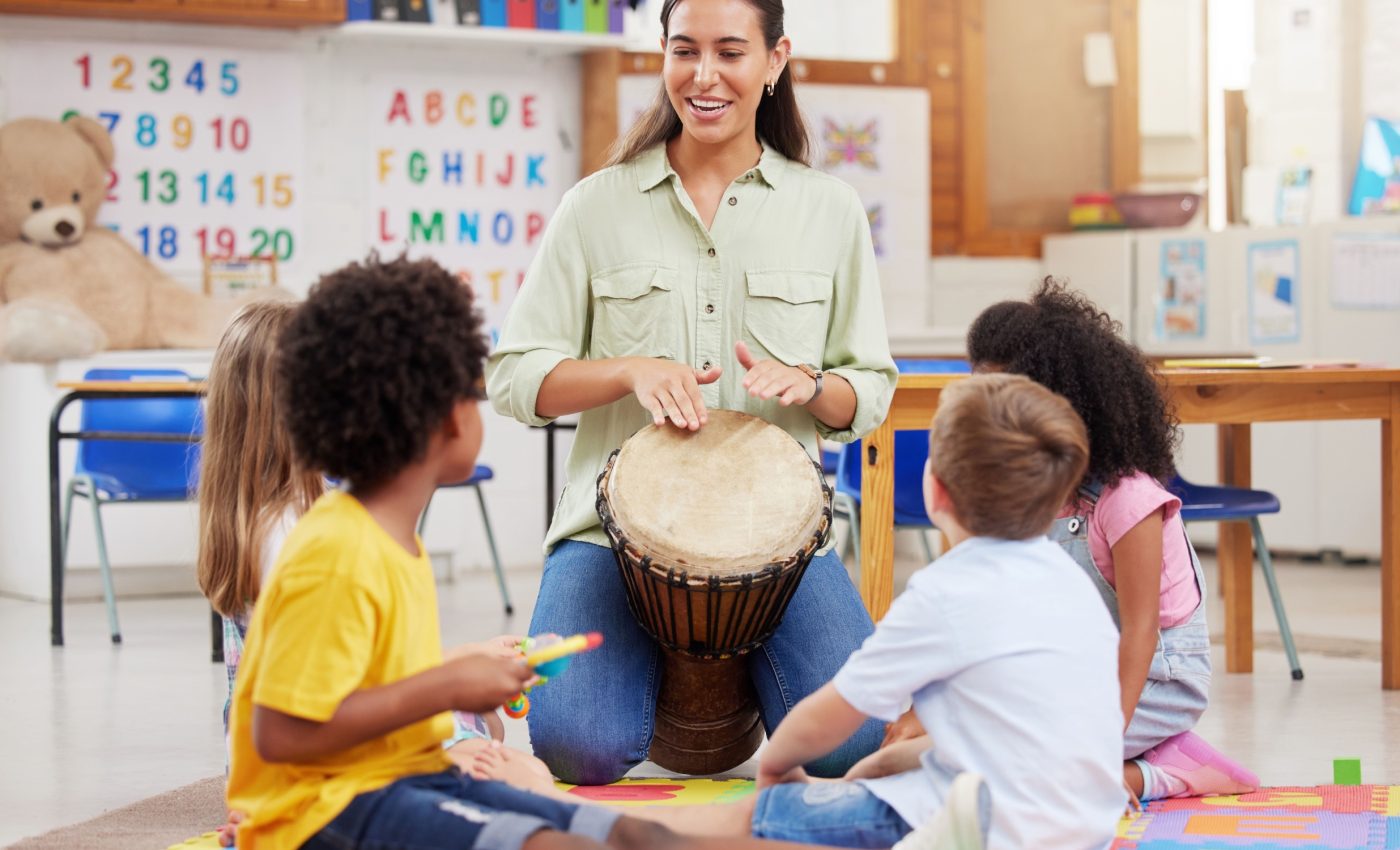
Music lessons linked to stronger reading skills in children
Reading doesn’t come naturally. It is a skill children must learn step by step. Some master it quickly, while others struggle. A new study suggests music lessons might tip the balance.
Researchers from Aberdeen and Dundee explored how music lessons affect children’s brains and reading ability. The results point toward an unexpected ally in literacy: rhythm and melody.
Children learning to read
Between ages five and nine, children make a huge leap. At first, many sound out letters slowly. Later, they recognize words on sight and read with ease. This shift depends on brain regions that process sound and meaning.
One crucial skill is phonological awareness – the ability to notice and play with sounds inside words. Without it, letters remain meaningless symbols.
Reading also becomes increasingly left-brain dominant during these years. Activities that sharpen listening and sound skills can help children along the way.
Music and language
Language and music overlap more than we realize. The OPERA theory suggests that the demands of music sharpen the brain’s handling of sound.
The PRISM model emphasizes rhythm. When a child keeps time in music, the same circuits help track syllables in speech.
Clapping to a beat or singing in tune is not just fun. It builds the timing and precision that later allow a child to match letters to sounds. The overlap is so strong that some researchers consider music a training ground for language.
Not everyone agrees that music strengthens reading. Some say the benefits come from wealthier families having more access to lessons. Others argue the effect may reflect intelligence or parental support. Large studies sometimes fail to find a link.
Yet many smaller projects have found that music lessons improve sound awareness and listening in noisy settings. The new study takes a different approach: it looks directly at children’s brains while they hear stories.
How children read
The brain doesn’t just listen to speech; it moves in rhythm with it. This process is called cortical tracking of speech, or CTS. Neural activity locks onto syllables and intonation. By following the beat of speech, the brain chops up the sound stream into words.
Children with dyslexia often show weaker CTS. Their brains struggle to follow the rhythm of language. This makes reading harder. If music training improves rhythm skills, it might also sharpen CTS.
The study from the University of Aberdeen followed 57 children between five and nine years old. About half had regular music lessons. The rest took part in activities like sports but not music. Both groups were matched for age, background, and gender.
Each child did two reading-related tasks. One tested phonological awareness. The other measured word reading speed. Then researchers recorded brain activity while the children listened to a story. These recordings revealed how well their brains tracked the rhythm of speech.
Musical training boosts reading skills
Children with music training outperformed the others in both reading and sound awareness. This difference held even when researchers considered family background and memory skills.
Brain data showed another pattern. Stronger left-brain tracking of speech predicted better reading. Stronger right-brain tracking predicted poorer reading. This suggests that skilled reading relies on specialized circuits in the left hemisphere.
Here is the surprising part. Musically trained children did well even when their left-brain tracking was weaker. Their brains seemed to reach the same outcome through more efficient strategies. This pattern looks similar to what scientists usually see in older, more mature readers.
Music lessons and sound awareness
The researchers tested whether music influenced reading directly or indirectly. The results showed that phonological awareness explained most of the connection. Music improved sound awareness. Stronger sound awareness then supported reading growth. CTS played a role, but it was not the main bridge.
This means the clearest benefit of music lies in training the ear for the building blocks of words. Once children can hear and manipulate sounds, reading becomes smoother.
The practical message is simple. Music lessons may do more than build artistic skills. They can also support literacy. A few hours of music a week could boost children who fall behind in reading.
Timing matters too. The strongest benefits come during early school years, when the brain is rapidly organizing language networks. Schools that offer structured music programs in these years may see gains in literacy.
Children’s brain and reading
The finding about hemispheres deserves attention. Skilled reading is tied to left-brain systems for speech. Heavy right-brain involvement often signals less efficient processing.
Children with music training showed a pattern closer to that of advanced readers. Their neural development seemed to accelerate.
This shift could explain why musically trained children read well even without strong left-brain CTS. Music may prepare the brain to reach reading maturity faster.
Future research directions
The study raises new questions. Would starting music even earlier, in preschool, have a stronger effect? Could music help children already diagnosed with dyslexia? How does music compare with other activities like dance or drama?
Future studies following children over many years will give clearer answers. For now, this research shows that the overlap between music and language is more than a metaphor – it is measurable in the brain.
Music is often treated as enrichment, something extra. This study suggests it may be essential. Learning rhythm and melody sharpens the very skills children need for literacy. By enhancing phonological awareness, music lessons help unlock reading.
Classrooms searching for simple, engaging, and low-cost tools to support learning may find the answer in music. The joy of song or the challenge of an instrument could be more than play. It could be the sound of a child finding their voice in reading.
The study is published in the journal bioRxiv.
—–
Like what you read? Subscribe to our newsletter for engaging articles, exclusive content, and the latest updates.
Check us out on EarthSnap, a free app brought to you by Eric Ralls and Earth.com.
—–













